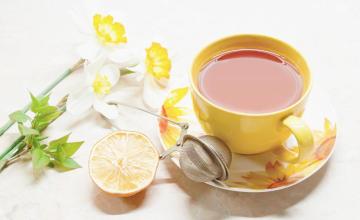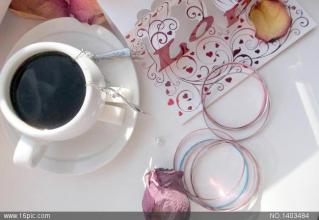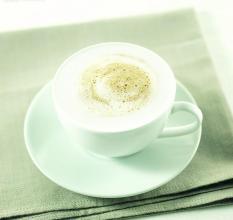Flavor and taste of Jamaican Blue Mountain Coffee introduction to boutique coffee beans in manor area
In 1670, Spain formally ceded Jamaica and other places to Britain according to the Treaty of Madrid. The British immediately used Jamaica as a base for their piracy. Before Loire Port was destroyed by an earthquake in 1692, it became the "capital" of Caribbean pirates. Since then, the British built Kingston City and gradually built it into the central city of Jamaica.
In the 150 years since 1692, Jamaica has become a world-famous producer of sugar, rum and coffee. [4]In order to maintain a large number of plantations, England established the Royal African Company in 1672.
After another major uprising in 1865, Britain declared Jamaica a Crown Colony in 1866. At the end of the 19th century, Jamaica's sugar industry declined and banana farming took its place. Kingston officially became the capital of Jamaica in 1872.
For decades after 1872, Jamaica's economy flourished, but social and cultural development was suppressed by the colonial authorities. During the Great Depression, in particular, there was a great deal of discontent among all classes in Jamaica with the declining social conditions. In 1938, workers in Jamaica revolted. Later, the colonial authorities were forced to grant some autonomy to the region. In 1944, Jamaica held its first general election.
In 1958, Jamaica joined the Federation of West Indies, but in 1961 voters rejected the Union Treaty, leading to Jamaica's withdrawal.[1]
Jamaica declared independence on August 6, 1962, and joined the Commonwealth after independence.
Andrew Holness, the youngest prime minister in Jamaica's history, is sworn in October 23, 2011 in Kingston, Jamaica's capital. [5]
Jamaica is located in the northwest of the Caribbean Sea, located at 17.42 degrees north latitude 18.31 degrees west longitude 76.11 degrees to 78.22 degrees west longitude, is an island country. [1]Jamaica Island is 234 km long from east to west and 82 km wide from north to south. Its territory covers an area of 11420 square kilometers, of which 10991 square kilometers are land. To the east across the Strait of Jamaica, opposite Haiti, about 140 km north of Cuba. It is the third largest island in the Caribbean and has a coastline of 1220 kilometers. Jamaica is the third largest country in the West Indies after Cuba and Haiti
The Jamaica Coffee Industry Board was established by the Government of Jamaica in 1950 to establish quality standards for Jamaica coffee and oversee the implementation of quality standards to ensure the quality of Jamaica coffee. The Commission awards a special official seal to Jamaica's exports of green and roasted coffee and is the world's highest national coffee authority. Those that can represent the origin of Blue Mountain Coffee include Mavis Bank Coffee Factory (M.B.C. F), Blue Mountain Coffee Cooperative Factory (M.H.C.C.T.), Portland Blue Mountain Coffee Cooperative Plant (P.X.X.S.H.), Coffee Industry Association (Wallenford), Coffee Industry Association (St. John's Peak) and Blue (J.A.S.) 6 kinds of logo.
By 1969, the situation had improved, as Japanese loans had improved the quality of production and thus secured the market. By now, the coffee has reached the point of being fanatically loved.
By 1981, about 1500 hectares of land in Jamaica had been cleared for coffee, followed by another 6000 hectares. In fact, today's Blue Mountain region is a small area of only 6000 hectares, and it is impossible that all the coffee labeled "Blue Mountain" is grown there. Another 12000 hectares are devoted to growing two other types of coffee: alpine premium coffee and Jamaica premium coffee.
Blue Mountain Coffee is the world's premier coffee, and Jamaica's weather, geology and terrain combine to provide the ideal location. Ridges running through Jamaica extend to the east of the island, and the Blue Mountains rise to more than 2100 meters. The weather is cool, foggy and frequent, so use this rich soil to reconcile rain. Here, coffee trees are grown in a mixed cropping system, alongside banana and avocado trees on terraces. Some small farms are also planted. But even the region's largest planters are small-scale farmers by international standards, many of them smallholders whose families have been working for two centuries. The coffee industry in Jamaica faces a number of problems, such as the impact of hurricanes, increased labour costs and difficulties in mechanising terraces. Many small estates and farms are difficult to rationalize

Important Notice :
前街咖啡 FrontStreet Coffee has moved to new addredd:
FrontStreet Coffee Address: 315,Donghua East Road,GuangZhou
Tel:020 38364473
- Prev

Very rich flavor Manning Coffee Manor in Indonesia the characteristics of flavor and taste of high-quality coffee beans
Known as Mantenin mandheling, it is produced all over Lake Toba in northern Sumatra. The finished product has a unique fragrance of herbs and trees. Gold Mantenin, the Japanese adopted more stringent quality control more than a decade ago. After picking beans manually for four times, they eliminated defective beans and produced gold mantenin with dark green color and equal appearance of beans, creating another wave of market demand. Even Europe and the United States are crazy about it.
- Next

Full-bodied bitter coffee manor producing area flavor and taste characteristics of high-quality coffee beans
The types of rainfall can be divided into bimodal distribution and unimodal distribution. The areas with double bee rainfall include the provinces around the Lake Victoria basin, the northeast highlands, the coastal and inland northeastern. The bimodal rainfall area is characterized by two rainy seasons. The short rainy season occurs from September to December. The total rainfall can reach 200-500 mm. The long rainy season occurs from March to May.
Related
- Detailed explanation of Jadeite planting Land in Panamanian Jadeite Manor introduction to the grading system of Jadeite competitive bidding, Red bid, Green bid and Rose Summer
- Story of Coffee planting in Brenka region of Costa Rica Stonehenge Manor anaerobic heavy honey treatment of flavor mouth
- What's on the barrel of Blue Mountain Coffee beans?
- Can American coffee also pull flowers? How to use hot American style to pull out a good-looking pattern?
- Can you make a cold extract with coffee beans? What is the right proportion for cold-extracted coffee formula?
- Indonesian PWN Gold Mandrine Coffee Origin Features Flavor How to Chong? Mandolin coffee is American.
- A brief introduction to the flavor characteristics of Brazilian yellow bourbon coffee beans
- What is the effect of different water quality on the flavor of cold-extracted coffee? What kind of water is best for brewing coffee?
- Why do you think of Rose Summer whenever you mention Panamanian coffee?
- Introduction to the characteristics of authentic blue mountain coffee bean producing areas? What is the CIB Coffee Authority in Jamaica?

